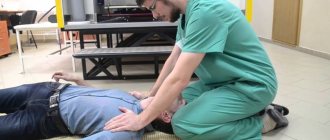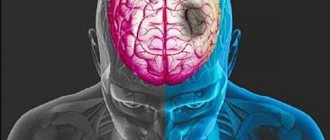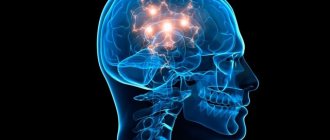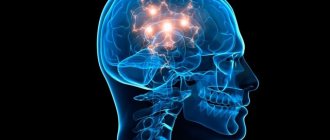Is it possible to die from VSD? This question has probably worried everyone who has encountered at least several symptoms of vegetative-vascular dystonia throughout their life. On the one hand, this diagnosis is made almost more often than all other somatic and mental disorders, on the other hand, many experts do not consider VSD to be an independent disease, but rather a complex of symptoms and conditions.
Vegetovascular dystonia
VSD refers to disorders of the autonomic nervous system that cause a number of unpleasant symptoms. They are similar to the manifestations of other diseases and are quite vague, which is why many domestic doctors make this diagnosis in cases where they cannot or do not want to find the real problem. In this case, as a rule, there are no serious abnormalities in the body. For this reason, many doctors refuse to recognize this disease. Nevertheless, international medicine considers VSD a real disease and implies mandatory treatment.
Dystonia occurs in the presence of a hereditary predisposition, chronic stress and diseases of the nervous, cardiovascular, gastrointestinal or endocrine systems. Most often, it manifests itself against the backdrop of long-term experiences as follows: the human psyche tries to force an unpleasant situation out of the head, which is why neurotic symptoms appear throughout the body or in certain parts of it. The risk of VSD is increased in people who are often stressed, suffer from blood pressure problems, or have bad habits.
Dystonia comes in several types. The difference between them is which symptoms predominate. While in some cases high blood pressure is the most prominent problem in a person, in other patients heart pain is the most problematic. Such manifestations of the disease among patients lead to terrible thoughts that one can die from an attack of VSD.
Main types of VSD:
- hypertensive – characterized by high blood pressure, headache, a feeling of heaviness in the back of the head, darkening of the eyes and panic attacks;
- hypotonic – low blood pressure, general loss of strength, muscle weakness, irritability and apathy are observed, fainting is possible;
- cardiac – manifested by regular heart pain, tachycardia and arrhythmia occur, and regular sensations of lack of oxygen;
- mixed - a combination of symptoms of several types of dystonia is possible, often the whole spectrum of negative sensations manifests itself.
Vagotonic and cerebral types are also distinguished separately. In the first case, cardiac symptoms predominate, similar to serious heart disease. VSD can be chronic or manifest itself in the form of periodic crises and bright outbreaks. In the second case, VSD is characterized by impaired vascular tone in the brain, blurred vision, tachycardia and hot flashes.
When thinking about whether VSD is life-threatening, we must not forget that under the mask of dystonia there may be a serious illness that requires urgent treatment.
How to live with VSD and is it life-threatening?
To date, no cases of death from VSD have been recorded, and this is not surprising: most experts consider this condition more an emotional disorder than a specific physical disease. And this, as you know, is not fatal.
Nevertheless, a person’s quality of life in these cases suffers quite significantly, so it would be wise to follow some recommendations in order to minimize the consequences and manifestations of a neurocirculatory disorder. Here's what you can do first for self-medication:
- Minimize stress. Analyze your lifestyle and try to rearrange it in such a way that you worry less and get into stressful situations.
- Normalize sleep patterns. Try to sleep at least 7–8 hours a day, while doing everything to ensure uninterrupted sleep: darken the room, eliminate disturbing factors such as sudden phone calls, excess light and sound. After waking up, exercise or light exercises would be a good idea.
- Try to walk outdoors more often, especially in the evening, before bed.
- If possible, give up bad habits and excessive consumption of stimulant drinks.
- Minimize the consumption of spicy, fatty, too salty foods, as well as sugar. Pay more attention to vegetables and fruits, especially those rich in potassium and other beneficial minerals.
If the manifestations of VSD interfere too much with your life and cannot be corrected using the above methods, you should complete the self-diagnosis and consult a doctor. Panic attacks and sudden attacks of dystonia can be quite successfully treated with medications, but prescribing them will require an examination to clarify the diagnosis.
If you are concerned about heightened emotional reactions, do not be afraid to consult a psychiatrist. Unfortunately, today there is a belief in society that one should contact doctors of this profile only when control over oneself has been completely lost, or even wait for forced hospitalization. This is wrong. In the absence of somatic disorders, the psychiatrist will prescribe medications to correct the emotional state, which often help overcome other symptoms of VSD.
So to the question of why vegetative-vascular dystonia is dangerous, the answer will be something like this: nothing except the symptoms themselves. The fear of death in such cases does not entail anything other than fear itself. The worst thing that can happen is, figuratively speaking, to go crazy from a disturbance in the emotional state: in particular, thoughts about whether this disease is dangerous. There is no physical risk of death with NCD.
Clinical manifestations
Dystonia manifests itself constantly with rare clearings or periodic attacks. At a time when the disease does not show itself, a person can often feel quite normal and have no health complaints. But the active phase of VSD will cause various symptoms. In some cases, it becomes very difficult to transfer them.
Manifestations of VSD:
- blood pressure disorders;
- fast or slow heart rate;
- shortness of breath, feeling of lack of oxygen;
- pain in the chest or heart;
- dizziness, headaches;
- heartburn, bloating, diarrhea, nausea;
- increased sweating, chills;
- numbness or tingling of the extremities, goosebumps;
- tinnitus, decreased visual acuity;
- worsening sleep, increased sleepiness during the day;
- irritability, apathy, neurosis;
- panic attacks, sudden fear of people;
- decreased attentiveness, deterioration of brain activity.
Such symptoms are very similar to a number of serious diseases. Therefore, before making a diagnosis, doctors have to prescribe a full examination to exclude other health disorders not related to the nervous system. Some people prefer to immediately diagnose VSD, bypassing all body checks. Such a decision can lead to serious consequences if the patient actually has diseases of a different kind.
Factors provoking VSD
The factor that provokes the onset of the first symptoms of VSD may be:
- sudden emotional shock;
- prolonged emotional stress that ended in a nervous breakdown;
- allergy;
- overwork;
- unfavorable climatic or environmental conditions;
- age-related hormonal changes;
- lack or excess of physical activity;
- traumatic brain injury;
- poor nutrition;
- intoxication;
- infectious diseases;
- imbalance of microelements or hypovitaminosis.
Why does VSD worsen in the fall? In autumn, the body lacks vitamins, daylight hours are shortened, and the weather often changes. These factors contribute to the autumn exacerbation of VSD.
Dangerous consequences of VSD
The autonomic nervous system is responsible for many functions of the body and provides it with the ability to adapt to the external environment. With dystonia, all this begins to malfunction. The most problematic are long-term manifestations of the disease, which are often accompanied by feelings of anxiety. To understand whether vegetative-vascular dystonia is dangerous for human life, it is enough to understand the disorders that arise when it appears.
Dangerous manifestations of VSD:
- heart problems;
- breathing problems;
- disruptions in the endocrine system;
- depression, psychosis, panic attacks.
Such manifestations carry a certain danger. Even if there is no harm from their direct influence, there is no guarantee that the patient will not suffer from the consequences. For example, he may faint and injure his head. Another disease may also develop against the background of constantly high or low blood pressure.
Panic attacks in children are considered the most harmful manifestation of dystonia. A teenager has a very flexible psyche, which is why he may not even be aware of what is happening. In such situations, the child is capable of doing something dangerous without realizing it. At the same time, all the main symptoms in children often manifest themselves more clearly, creating more problems for leading a normal life.
If the dangers for ordinary people are rather arbitrary and may not arise at all for many years, then for pregnant women they are quite real. Pregnancy requires utmost care and maintenance of the mother's health. With minimal deviations there is a risk of serious harm to the fetus. Therefore, various complications are possible with dystonia.
Why is VSD dangerous for pregnant women?
- premature birth;
- increased toxicosis, gestosis;
- bleeding during childbirth;
- anomalies of labor;
- intrauterine fetal hypoxia;
- suture dehiscence after childbirth;
- lactostasis.
Such violations can result in serious consequences. In most cases, everything goes well, and minor deviations can be quickly treated. But sometimes problems with the child’s development may still arise, which will require special attention from doctors. Therefore, when planning pregnancy, you should definitely take into account the fact that the mother has vegetative-vascular dystonia and report this to your doctor. You also need to remember that some usual medications for the symptoms of VSD may be strictly prohibited during the period of bearing a child.
Causes and mechanism of development of VSD
Diagnostic studies indicate that this set of symptoms is a consequence of an imbalance in the functioning of the autonomic nervous system. Unlike the somatic nervous system, which is controlled by consciousness and reason, the autonomic nervous system works without our participation. This is the regulation of breathing, heart contractions, focusing of vision and other basic functions of the body depending on environmental conditions: for example, accelerating the reaction and increasing the heart rate in extreme conditions or slowing down breathing and relaxing muscles during sleep. This part of the nervous system always works: from the moment a person is born and literally until death.
Among the factors that provoke this disorder are the following:
- Heredity. It is known that disorders of the nervous system are often inherited, and dystonia is no exception. If someone in the family suffered from emotional lability, increased anxiety, spontaneous fears, then the next generations are at risk.
- The period of hormonal changes. The time when the body experiences a restructuring of the endocrine system (adolescence, pregnancy, childbirth, constant severe stress, etc.) becomes fertile ground for the manifestation of symptoms of NCD. Against the background of hormonal imbalance, sudden surges and decreased activity of the endocrine glands, people often experience the above-described sensations to varying degrees of severity.
- Organic brain lesions. Patients with a history of TBI, brain tumors, or strokes are very vulnerable to developing VSD, even if the disease itself has already been treated. Nervous disorders in the form of rapid heartbeat, dizziness, panic attacks and other characteristic manifestations are frequent companions of such people.
- Diseases of the endocrine system. Disturbances in the functioning of the adrenal glands, thyroid glands, and gonads often provoke dystonic manifestations, because in these cases the hormonal balance of the body is disrupted.











